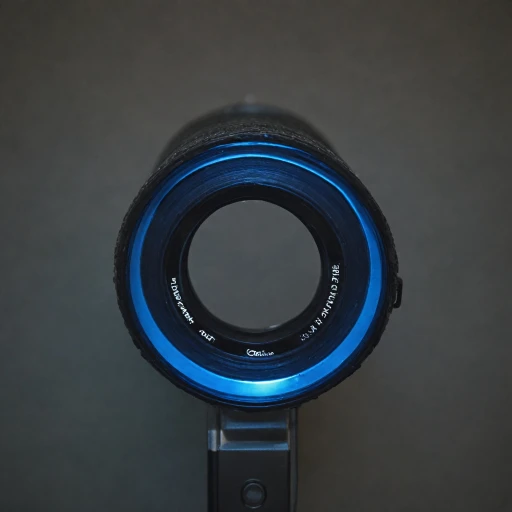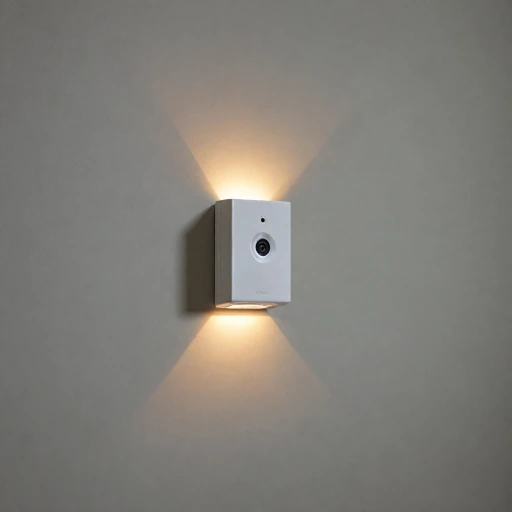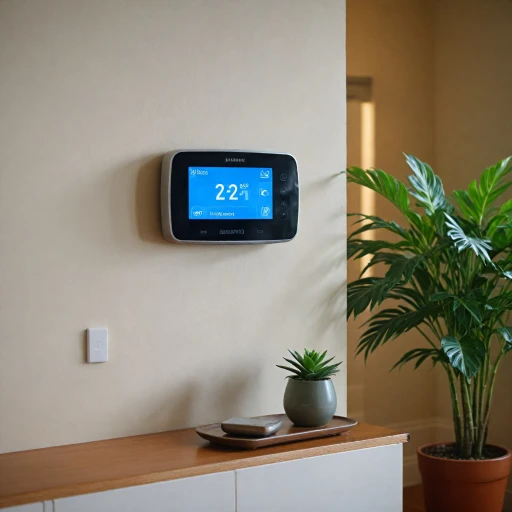
Understanding the Need to Turn Off Your Ring Camera
Considering the Reasons to Temporarily Disable Your Ring Camera
Understanding why you might need to turn off your Ring camera is crucial to ensure you are using the device to its full potential while maintaining privacy when needed. While these smart cameras and video doorbells offer significant security benefits with their motion detection and live view capabilities, there can be instances where disabling the camera, even temporarily, is necessary for personal or practical reasons.
One primary motivation to disable your Ring camera could be privacy concerns. You might not want your movements or conversations to be recorded or monitored, especially if you've got guests or family at home and wish to maintain a private environment. Another reason could be avoiding unnecessary recording and notifications when home, as constant alerts from motion recording may become annoying.
In certain cases, disabling the device is essential when making adjustments or updates to your home. This involves situations where someone will be in the vicinity of the Ring device for extended periods; to prevent excessive data usage and storage from constant activation. Additionally, if you're troubleshooting issues or updating your Ring device or settings, turning it off temporarily might be a necessary step.
While exploring the various ways to disable the Ring device, there's a need to understand the full functionality of your device settings and modes. The Ring app provides users easy access to switch into different modes, and physically disconnecting the camera may also be an option.
For users seeking enhanced privacy, integrating advanced surveillance tools, such as professional surveillance microphones, offers additional control over your security environment, ensuring efficient operation with advanced features.
Different Methods to Turn Off Your Ring Camera
Exploring Various Ways to Disable Your Ring Camera
If you've come to the decision that it's time to disable your Ring camera, whether temporarily or permanently, it's important to understand the different approaches available to you. Disabling your camera can be necessary for various reasons, such as maintaining privacy or conserving power when the device is not required. The methods you choose may depend on whether you're looking to stop the motion detection, recording, or completely shut off all alarms and security features.
- Using the Ring App: This is one of the most straightforward methods. By accessing the app on your device, be it your phone or tablet, you can navigate through the settings. You'll find options to adjust modes that control the camera's behavior. In the app, simply tap on the specific camera or device, and you'll be directed to the settings. Here you can disable motion detection or turn off the recording functions. It's a flexible approach that does not require physically interacting with the camera.
- Physical Disconnection: For those who prefer a hands-on method, physically disconnecting the camera is an option. This involves removing the power source or, in the case of a battery-operated device, taking out the battery. It's a foolproof way to ensure the camera is completely inactive. Remember, this method might not be feasible for every type of Ring device, such as a video doorbell that's wired into your home's electrical system.
- Adjusting Privacy Settings: Ring cameras come with various settings that you can adjust to manage what the camera records and when it's active. By modifying the privacy zones within the app, you can effectively disable the camera's ability to monitor certain areas or turn off notifications completely. This, combined with adjusting modes, allows you to customize what your camera records, providing an extra layer of control over your security settings.
These methods give you the power to manage your home surveillance according to your current needs without compromising long-term security. In case you face issues while attempting to disable your camera, troubleshooting options are available, which can help resolve common problems swiftly.
Using the Ring App to Disable Your Camera
Deactivating Your Camera Through the Ring App
To disable your Ring camera efficiently, the Ring app offers an accessible way to manage these settings directly from your smartphone. Whether you are utilizing a Ring doorbell, a video doorbell, or any of the Ring cameras, the app provides you the flexibility to adjust your device settings seamlessly. First, you'll need to open the Ring app on your smartphone, ensuring that you are logged into your Ring account. Here's a step-by-step guide to navigate through the process:- Access Device Settings: Once in the app, locate the specific Ring device you wish to disable, such as a Ring alarm or a security camera. Tap on the device to enter its dedicated settings page.
- Disable Motion Detection: Within the device settings, you will find the option to modify motion detection. To halt any unwanted alerts or recording, you can adjust this by turning off motion detection and recording functions. This temporary disablement will prevent the camera from capturing any motion or alerting you unnecessarily.
- Adjust Modes: The Ring app allows you to switch between various modes, each offering different levels of camera operation. Under the "Modes" section, you can opt for "Disarmed" to ensure your camera won't record any activities, providing enhanced control over your Ring camera's behavior.
- Turn Off Live View: For added privacy or when you wish for no recording to occur, disabling the live view option in your app is also a step that many users prefer. This ensures no real-time monitoring occurs remotely via the app.
Physical Disconnection of the Ring Camera
Unplugging and Detaching the Ring Device
For users aiming to completely shut down their Ring camera without relying on the app or software settings, physically disconnecting it can be a straightforward solution. This method is particularly useful when you want to ensure the camera is not recording or operational in any form.
First, locate the power source that your Ring device utilizes. Depending on the model, your Ring video doorbell or Ring cameras might be powered by a battery, a wired connection, or even a solar panel.
- Battery-Powered Ring Cameras: To turn off the device, you'll need to remove the battery. Find the battery compartment, typically on the back or bottom. Slide or open the compartment, and carefully remove the battery. This will disable the device entirely.
- Wired Ring Devices: For wired setups, the task involves disconnecting the power cable from the wall outlet or the device itself. Once unplugged, the camera will cease all functions, including video streaming and motion detection.
- Solar-Powered Devices: If your device is solar-powered, detaching the solar panel from either the device or blocking the solar panel from sunlight will gradually disable the camera as the battery depletes.
Additionally, for users aiming to ensure complete privacy, consider physically covering the camera lens. This can act as an extra layer of security to prevent inadvertent recording in the rare event the device retains some power.
Remember, while physical disconnection offers a surefire way to disable your Ring device, you'll also remove any security features like live view or motion detection until the device is plugged back in or powered up.
Adjusting Privacy Settings for Your Ring Camera
Adjusting Privacy Controls to Safeguard Your Space
To ensure your Ring camera system works comfortably within your privacy boundaries, fine-tuning the privacy settings can be highly effective. By customizing these settings, you can decide when and how your devices should activate their recording features.
- Privacy Zones: Ring devices provide the option to create privacy zones, which are specific areas that the camera ignores. This feature can help you ensure private spots within your property's vicinity are not recorded.
- Motion Detection Preferences: Adjust the sensitivity levels of motion detection to reduce unnecessary notifications. This allows your ring device to hone in on genuine security threats instead of being triggered by minor movements.
- Control When Cameras Are Active: Specify which modes your camera should use, such as Home, Away, or Disarmed. The Ring app offers modes for customizing security preferences like enabling or disabling live view and motion detection.
- Shared Users: If you have multiple ring devices under one ring account, be mindful of who you grant access to. This ensures only trusted individuals can view or manage your camera feed and recordings.
The importance of these settings cannot be overstated. They provide you with the versatility to effectively manage your Ring camera's activity without compromising on security. Make adjustments in your device settings by opening the Ring app and heading to the pertinent section where you can make informed choices according to your comfort level.
Troubleshooting Common Issues When Disabling Your Ring Camera
Resolving Challenges When Deactivating Ring Cameras
Disabling your Ring camera may seem straightforward, but sometimes you encounter issues that need troubleshooting. Here's a guide to navigate through potential problems effectively.- App Malfunctions: When the Ring app doesn't respond to commands to disable the camera, ensure your app is up to date. Restart your mobile device, open Ring, and attempt to turn off the camera again, accessing the device settings.
- Human Error: If the camera seems active, double-check that you've successfully disabled motion recording. Tap into modes and verify the settings are adjusted correctly to prevent motion detection activity.
- Network Connectivity: The camera relies on Wi-Fi for communication. Ensure a stable connection by checking your internet settings. A physical reset of the router can resolve connectivity issues that prevent the device from responding to disable commands.
- Physical Wiring Issues: For users relying on wired setups, especially for the Ring Video Doorbell, check the wiring connections. Sometimes, simply tightening the connections can rectify the issue if the camera remains active despite disabling it in the app.
- Device Sync Failures: Synchronization between Ring devices and the app can lag. Logging out and back into your Ring account sometimes resolves the issue, or alternatively, uninstalling and reinstalling the app.
- Privacy Modes Not Engaging: If adjusting privacy settings doesn't stop recording, review the settings tap in the app to ensure modes ring are effectively reducing the camera's activity. Sometimes a reboot of the camera helps in applying these changes.












